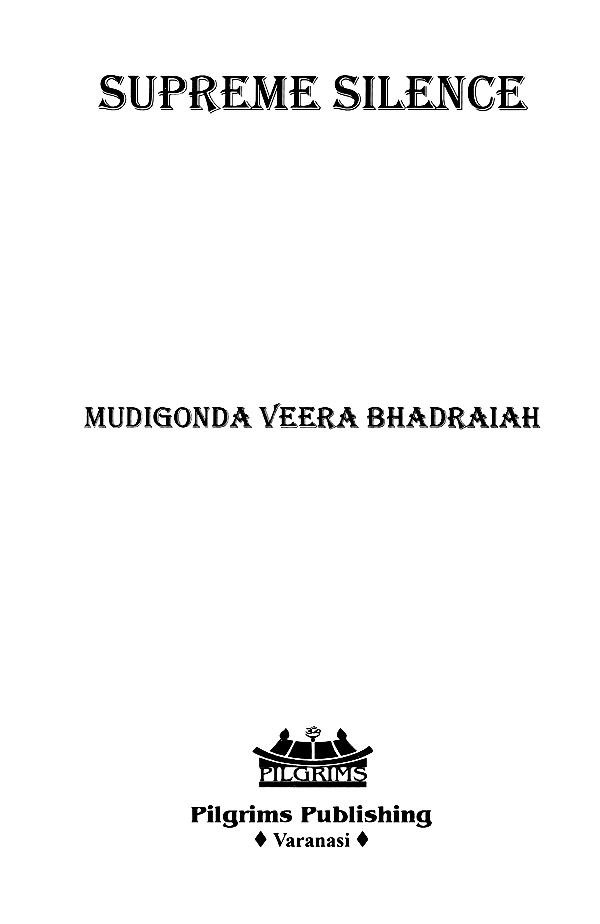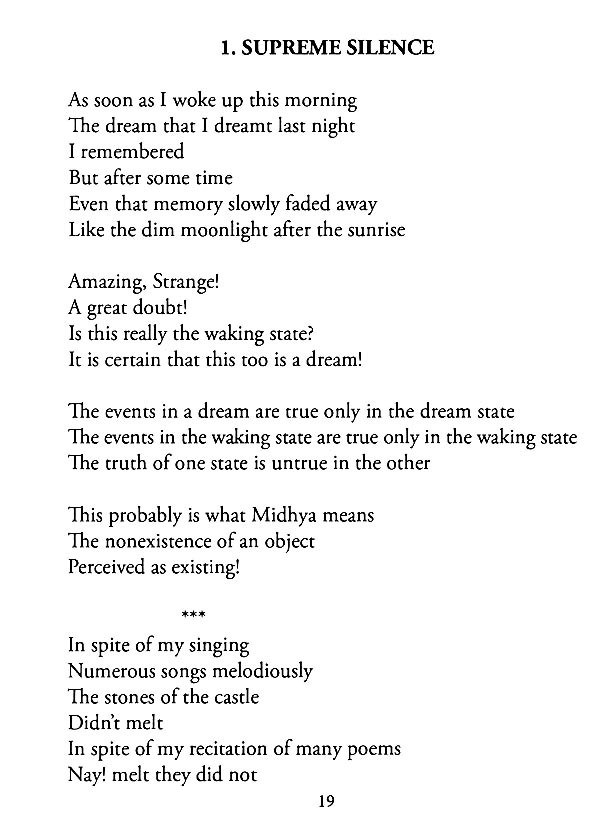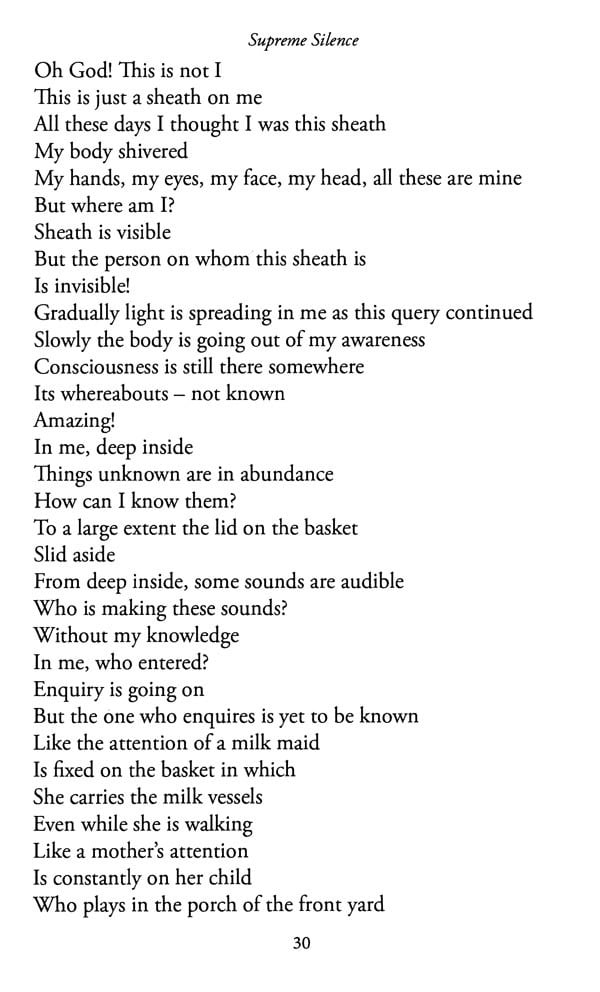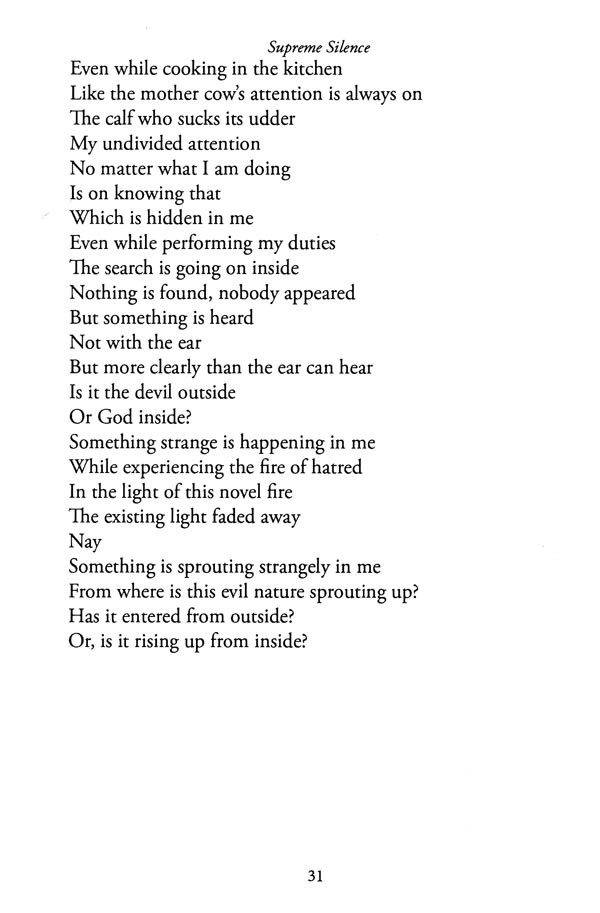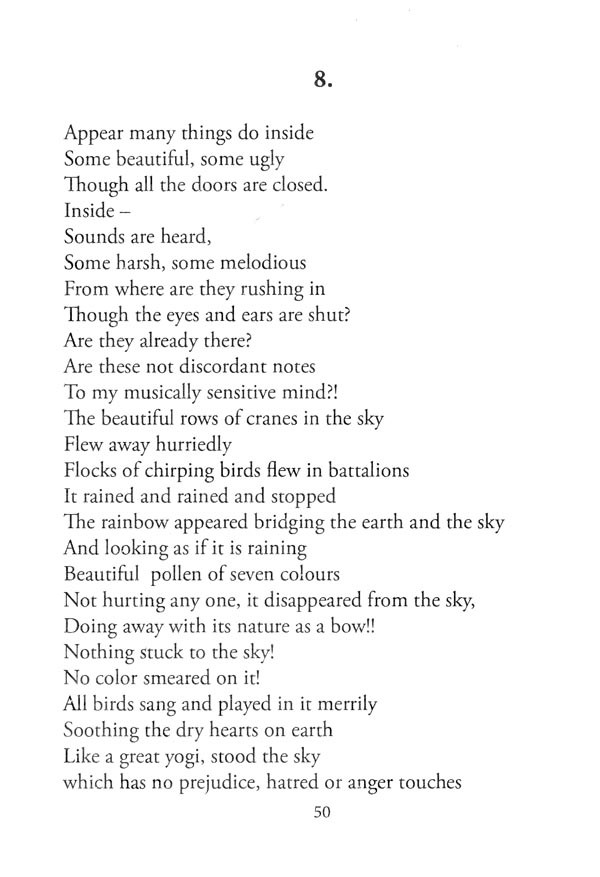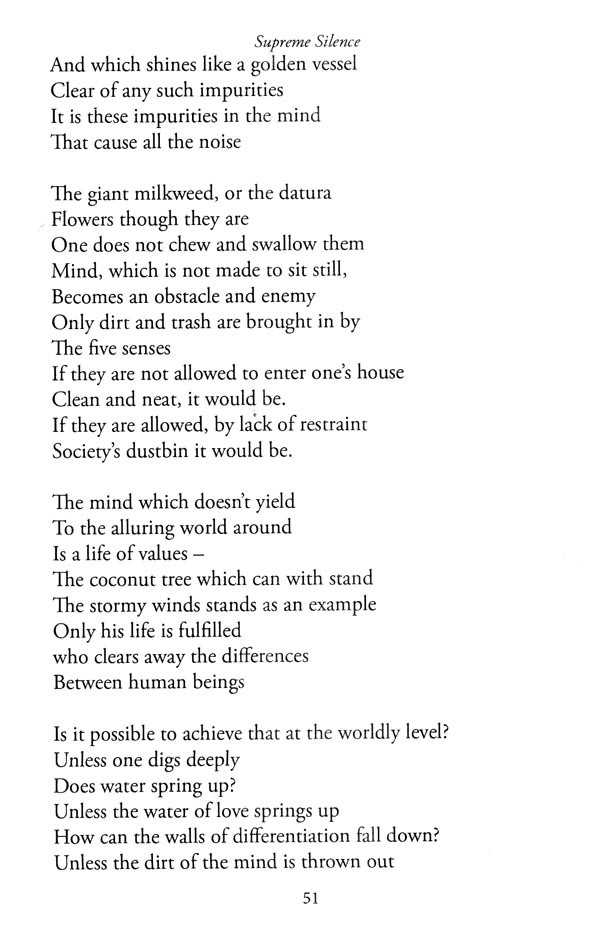
Supreme Silence
Book Specification
| Item Code: | UBB496 |
| Author: | MUDIGONDA VEERA BHADRAIAH |
| Publisher: | PILGRIMS PUBLISHING,VARANASI |
| Language: | English |
| Edition: | 2022 |
| ISBN: | 9789350763474 |
| Pages: | 56 |
| Cover: | PAPERBACK |
| Other Details | 8.50 X 5.50 inch |
| Weight | 90 gm |
Book Description
The theme of this long poem Supreme Silence is the experience of overcoming the busy mind and reaching the state of perfect silence. This process is described in a poetic manner in this long poem.
Withdrawal of the mind stage by stage, gradually,is de- scribed in the nine chapters of this long poem. Ultimately at- taining the non-dual (Kevalam) state, freeing the Self from the hold of external world i.e., merging the mind into the state of Supreme Silence (and) withdrawing it completely from the ex- ternal world, the Poem ends with the attainment of the state of Supreme Silence. After experiencing the manifestation of Truth which is Supreme Silence, nothing remains to be lost or to be seen.
This Poem says in the last part that One is not separate from "happiness", and that happiness and the Self are One.
Description of One's journey to the state of Supreme Silence is the main theme of this long poem. The writing style and method of epic poems, maha kaavyaas of the past is differ- ent from the modern long poems. The Modern poet evolved a new pattern of writing maha kaavyas, in which the story is left out and only feelings are expressed with the most aesthetic emotion and in the imagistic language. By Spirit Figure and Image are the same but with a structural difference. Creation of a lengthy image is necessary to express a lengthy experience.
Professor M. Veera Bhadraiah was born at Warangal in Telangana state in 1942. He got M.A. degree from Osmania University, and Ph. D. from Kakathiya University. He worked as a lecturer for 24 years in Government Degree Colleges as Reader and Professor in Telugu literature for 16 years in Hyderabad Central University and retired as Head Department of Telugu. He served as Honorary Professor in Sri Sathya Sai Institute of Higher Learning for 7 years.
He is considered as a scholarly critic and poet of great worth in Telugu literary field. He has authored 62 books in which "Vimarsha Kala thathwa Shashthralu" is unique. Along with his scholastic works his long poems and compilations are Jathi Vipanchee Ganam, Maha Mounam, Adhirohanam, Rasa Bhava Chithralu (with English translation viz., Poetic Images - a bilingual Edition), Kavithwa Kalathathwam, and Srothaswini (a compilation of his poems, published in 1968).
I am very fortunate to have Prof. Mudigonda Veera Bhadraiah (MVB) as my Guru, from whom I have learnt that knowledge and constant study are the only real wealth and the philosoph ical eye to see God even in a blade of grass or a wild flower which grows on the road side.
MVB was sending poems of this book immediately after writing them every day. That means as the font of heart ooz- es the Ganga water, he was sending them to me immediately. That means I have become the first reader of the manuscript of this long poem.
MVB is in the front ranks in the field of modern criticism also. He is the first aesthetician and critic in Telugu literary field to write on the subjects of western and Indian comparative Aesthetics and Principles of Literary Criticism with the names Vimarsha Moulika Lakshanalu, and Kala Thathwa Sasthramu, proving that the concepts of Dhwani, Alankara, Vakrokthi are relevant for all times, and applied them to the writings of con- temporary poets.
Any branch of knowledge,if not formed as a SHASTHRA i.e.,science, becomes useless, he says. He is the person who viv idly explained the difference between Alankara and Image.
**Contents and Sample Pages**
